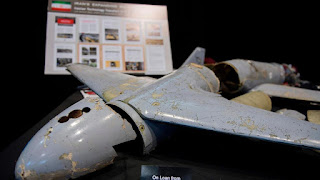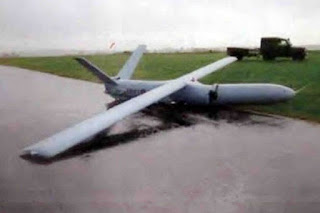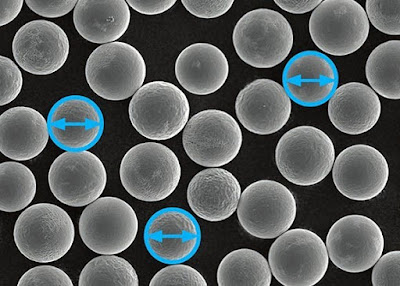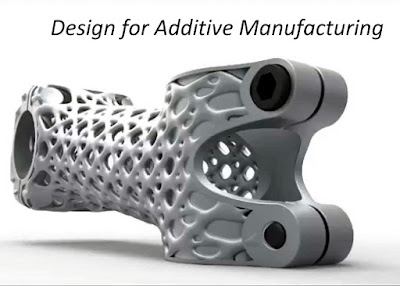The Yemeni military is rumored to have shot down a Houthi militia UAV in the Hodeidah region. Furthermore, the UAV is believed to be made by Iran.
lunes, 18 de junio de 2018
The UK looses the 16% of their Watchkeeper's Fleet
Developed from the Israeli-developed Elbit Hermes 450, the Watchkeeper is operated by the British Army as an unarmed Intelligence, Surveillance, Target Acquisition, and Reconnaissance (ISTAR) platform.
The UAV came down close to the airfield from which it was operating, bringing to five the number of Watchkeepers that have now been lost. The UK Ministry of Defence (MoD) confirmed the incident but declined to divulge details, except to say that an investigation has been launched.
With 54 air vehicles having been acquired, the army is now down to 49 as a result of its losses. A senior service official previously told Jane’s that expected attrition losses were built into the original number of Watchkeepers procured, though it was noted that this was to enable the platform to be used in less permissive environments rather than to cover for expected accidents.
miércoles, 13 de junio de 2018
AARTOS: A brief look
AP-Flyer manufacture innovative and technologically advanced Aaronia's Drone Detection System AARTOS (Advanced Automatic RF Tracking and Observation Solution).
The System is used to detect the incursion of unwanted drones, based on the directional real-time measurement of the electromagnetic emissions of drones. It warns the operator when drones are in the area and sends alerts.
Top 3 Additive Manufacturing OEMs for UAVs
No doubt I have left out many interesting OEMs, but now and today, am I convinced these are the top three, taking into account just its versatility when manufacturing end-use parts for UAVs.
1: Stratasys
2: 3D Systems
3: EOS
Their three shared main advantages are their efficiency, their reliability, and their range of materials. Again: I have left out many interesting OEMs, but the market is moving on, and I think we will see interesting developments in a mid term future.
DroneDeploy launches Thermal Live Map
DroneDeploy, a drone software company with the largest drone data platform in the world, today announced the launch of Thermal Live Map, a real-time mobile mapping solution which delivers insights only thermal imagery can reveal.
A first-of-its-kind feature, Thermal Live Map visualizes temperature range variability and creates instant thermal maps for quick, data-guided decisions on the job site. DroneDeploy is the leading cloud software platform for commercial drones, and is making the power of aerial data accessible and productive for everyone.
Trusted by leading brands globally, DroneDeploy is transforming the way businesses leverage UAVs and aerial data across industries, including agriculture, construction, mining, inspection, and surveying. Simple by design, DroneDeploy enables professional-grade imagery and analysis, 3D modeling and more from any UAV on any device.
The new solution is particularly valuable for firefighting, giving firefighters the ability to see through smoke and keep track of their personnel in large fire scenes. Thermal Live Map also helps locate precisely where the fire is hottest and provides definitive confirmation the fire is extinguished in specific areas. Thermal Live Map allows first responders to view hundreds of acres in minutes —day or night— penetrating hard-to-reach and hard-to-see terrain where missing or injured persons may be awaiting rescue.
Thermal Live Map also helps growers spot field stress in real time. They identify irrigation issues, detect ripeness, and analyze plant health early to solve problem areas and avoid lost harvests. "Thermal mapping is one of the most common and difficult requests from our customers to date, but the reward equals the challenge," said Mike Winn, CEO of DroneDeploy. "Live Map makes thermal insights more accessible while increasing safety and efficiency on job sites."
The new solution uses the latest advancements in edge computing to generate thermal drone maps locally on iOS devices as a DJI drone flies.
Hexadrone shows Tundra-M at Eurosatory 2018
Hexadrone's Tundra-M UAV is showcased at Eurosatory 2018, Paris Nord Villepinte, booth F528 Hall 6. The event is held from June 11th to June 15th. It is the first 100% customizable UAV for users specialized in defense and rescue.
The UAV’s body and arms have been manufactured in Windform® SP (body) and Windform® XT 2.0 (arms). The rapidly detachable arms and three quick release attaches make the Tundra-M extremely flexible to meet the needs of any profession, while making operational conditions easier to maintain.
Tundra-M is Hexadrone’s first fully modular and easy-to-use UAV for industrial and multi-purpose tasks, made for extreme weather conditions thanks to rugged, waterproof design. Tundra-M is the most advanced professional UAV created by Hexadrone.
Tundra-M 3D printed functional prototype has been manufactured by CRP Technology via professional 3D printing using Windform® Carbon-composite materials. Windform® XT 2.0 and Windform® SP are Carbon-fiber reinforced composite 3D printing materials from Windform family of high performance materials.
Windform was created by CRP Technology, CRP Group’s specialized company in advanced 3D printing and additive manufacturing solutions.
Etiquetas:
3D,
3D Printed,
3D Printing,
CRP,
CRP Technology,
Defense,
Eurosatory,
Eurosatory 2018,
Hexadrone,
Paris Nord Villepinte,
Security,
Tundra-M,
UAV,
Windform,
Windform SP,
Windform XT,
Windform XT 2.0
Research supporting principles for DFAM
Additive Manufacturing (AM) technologies enable the fabrication of parts and devices that are geometrically complex, have graded material compositions, and can be customised.
To take advantage of these capabilities, it is important to guide engineering designers through the various issues that are unique to AM. We explore the range of principles that are relevant to Design For Additive Manufacturing (DFAM) in this paper.
These include ideas about generating designs that cannot be fabricated using conventional methods to understanding the realities of existing machines and materials to micro-scale issues related to material microstructures and resulting process variations.
Comments about standardisation efforts in the ASTM and ISO organisations are also included.
Etiquetas:
Additive Manufacturing,
Additive Manufacturing Technologies,
AM,
ASTM,
Design For Additive Manufacturing,
Design Guidelines,
DFAM,
ISO
Additive Manufacturing of Cellular Structures
Additive Manufacturing technologies enable the fabrication of parts and devices that are geometrically complex, have graded material compositions, and can be customized.
To take advantage of these capabilities, it is important to assist designers in exploring unexplored regions of design spaces. This paper explores the opportunities and challenges in design for additive manufacturing.
A new computer-aided Design For Additive Manufacturing (DFAM) method is presented that is based on the process-structure-property-behavior model common in the materials design community.
Examples of cellular materials design and manufacturing are used to illustrate the DFAM method.
lunes, 11 de junio de 2018
Equispheres: Technology to atomize aluminium alloys
Equispheres has created a technology for producing perfectly spherical metal powder with specific characteristics desired within the aerospace and automotive industries because these powders yield higher performance and maintenance capabilities. Equispheres developed the technology to atomize aluminum alloys.
Additive Manufacturing of Wind Sensors for UAVs
According to Fred Squire, Director of Sales and Marketing at FT Technologies, “The FT205 is the first in a new generation of lightweight ultrasonic wind sensors. The light weight of the FT205 together with the proven FT ACU-RES technology make it ideal for use on aerial UAVs and other applications where weight is critical.”
FT Technologies, a British company specializing in the development and production of ultrasonic wind sensors, has reportedly launched its first UAV-specific and 3D printed device. FT Technologies’ FT205 is designed to aid UAV users in environmental projects and to execute more reliable flights.
Selective Laser Sintering (SLS) technology has been used to make the device, achieving a weight of just 100g. According to reports, the material used is a graphite and nylon composite. The device works in extreme environments, at a maximum altitude of 4.000 m and in temperatures between -20 and +70°C.
The FT205 sensor has been 3D printed by fellow British company Graphite Additive Manufacturing (Graphite AM) a specialist service bureau and consultancy firm. The FT205 uses acoustic resonance technology to deliver environmental information about the wind speed, direction and temperature, bases on minute vibrations in the device, and an in-built compass. A versatile piece of equipment, it can be plugged into an UAV’s input/output communications, mounted on a flat surface, or attached to a pole.
Etiquetas:
3D,
3D Printed,
3D printed device,
Fred Squire,
FT Technologies,
FT205,
Graphite Additive Manufacturing,
Graphite AM,
Selective Laser Sintering,
SLS,
UAV
Design for Additive Manufacturing
Design For Manufacturing (DFM) has typically meant that designers should tailor their designs to eliminate manufacturing difficulties and minimize manufacturing, assembly, and logistics costs.
However, the capabilities of Additive Manufacturing (AM) technologies provide an opportunity to rethink DFM to take advantage of the unique capabilities of these technologies:
1) Shape complexity: It is possible to build virtually any shape.
2) Hierarchical complexity: Hierarchical multiscale structures can be designed and fabricated from the microstructure through geometric mesostructure (sizes in the millimeter range) to the part-scale macrostructure
3) Material complexity: Material can be processed one point, or one layer, at a time.
4) Functional complexity: Fully functional assemblies and mechanisms can be fabricated directly using AM processes.
These unique capabilities enable new opportunities for customization, very significant improvements in product performance, multifunctionality, and lower overall manufacturing costs.
In the case of UAVs, AM technology enables low-volume manufacturing, easy integration of design changes and, at least as importantly, piece part reductions to greatly simplify product assembly.
ScanEagle helps to seize $1.5 billion of cocaine and heroin
In 2016, Insitu won the contract to provide sUAS ISR services aboard one National Security Cutter, the USCGC STRATTON.
By January 2018, ScanEagle had directly assisted the ship's crews in seizing more than $1.5 billion of cocaine and heroin, contributing to the USCG's record-breaking year for drug busts in 2017.
Insitu is an industry-leading provider of information for superior decision making. With offices in the U.S., U.K., and Australia, the company creates and supports unmanned systems and software technology that deliver end-to-end solutions for collecting, processing and understanding sensor data.
miércoles, 6 de junio de 2018
Additive Manufacturing of Spare Parts for U.S. Air Force lacks clear policy
Defense companies are using 3D Printing more often today to build parts for weapons: Aerojet Rocketdyne is using the technology to build rocket engines, Huntington Ingalls is using it to build warships and Boeing is 3D printing parts for its commercial, defense, and space products.
"Someday, the military will 3D-print missiles as needed" says Will Roper, the U.S. Air Force’s acquisition chief. In the shorter term, he just wants to use Additive Manufacturing Technology to get broken planes back in the air. But there is a legal, not technical, roadblock: Today’s 3D-printers could make short work of part deliveries, but some of those parts’ original manufacturers control the intellectual property — and so far, the service lacks clear policy for dealing with that.
Etiquetas:
3D Printing,
Additive,
Additive Manufacturing,
Additive Manufacturing Technology,
Aerojet Rocketdyne,
BOEING,
Huntington Ingalls,
U.S. Air Force,
Will Roper
Dark Sword: The New Chinese Nightmare
China has unveiled an unmanned fighter jet named "Dark Sword" that could fly at supersonic speeds and prove a 'nightmare' for US defence systems.
Dark Sword represents a very different design philosophy than US unmanned combat plans, and could give China a huge advantage if its military is able to mass-produce the aircraft, as it could rapidly expand its fighter fleet without training new pilots: In words of Justin Bronk, expert at the Royal United Services Institute "If produced in large numbers without having to train pilots, could at the very least soak up missiles from US fighters, and at the very best be an effective fighter by itself.''
Much about Dark Sword remains a mystery, but experts believe it is capable of flying like a fighter jet. This hints China is building the aircraft for use as a combat jet rather than a reconnaissance or precision missile strike vehicle, like the unmanned MQ-1 Predator drone used by US forces.
Verity Studios: Drone failsafe technology
Outdoor drone shows are growing in popularity – but indoor drone shows as a part of events and spectacles are even bigger.
So much so that Swiss-based Verity Studios, the leading developer of indoor drone systems, says that their clients have completed more than 30,000 autonomous flights safely above people, across 20 countries worldwide.
That safety and reliability comes from Verity’s “drone failsafe technology.” Proven in the 30,000 flights referenced above, the company also hopes to work with drone manufacturers to include the technology into their platforms.
The drones have been featured in events from Cirque du Soleil to concerts of heavy metal legends Metallica. “Cirque du Soleil’s objective is always to surprise and amaze its audience, and the Verity flying machines are unquestionably one of the most important statements of the Paramour show,” said Jean-Francois Bouchard, Chief Creative Officer of Cirque du Soleil.
Countering Malicious Drones
Today, the U.S. Senate Committee on Homeland Security and Governmental Affairs will hold a hearing on S. 2836, the Preventing Emerging Threats Act of 2018: Countering Malicious Drones.
The proposed Act would grant the Department of Justice and the Department of Homeland Security broad powers to deal with drones that are thought to pose a security risk.
The Act would allow the departments to track, take over, or take down drones. Specifically, it grants authority to:
“(A) Detect, identify, monitor, and track the unmanned aircraft system or unmanned aircraft, without prior consent, including by means of intercept or other access of a wire communication, an oral communication, or an electronic communication used to control the unmanned aircraft system or unmanned aircraft.
“(B) Warn the operator of the unmanned aircraft system or unmanned aircraft, including by passive or active, and direct or indirect physical, electronic, radio, and electromagnetic means.
“(C) Disrupt control of the unmanned aircraft system or unmanned aircraft, without prior consent, including by disabling the unmanned aircraft system or unmanned aircraft by intercepting, interfering, or causing interference with wire, oral, electronic, or radio communications used to control the unmanned aircraft system or unmanned aircraft.
“(D) Seize or exercise control of the unmanned aircraft system or unmanned aircraft.
“(E) Seize or otherwise confiscate the unmanned aircraft system or unmanned aircraft.
“(F) Use reasonable force to disable, damage, or destroy the unmanned aircraft system or unmanned aircraft.
Suscribirse a:
Entradas (Atom)















